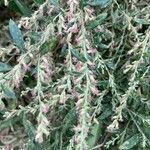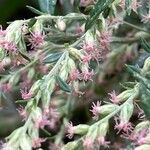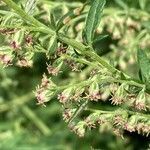A herb or small shrub. It grows 80-150 cm tall. The leaves have short leaf stalks. The leaves have a covering underneath. The leaves in the middle of the stem are oval and 6-12 cm long by 4-8 cm wide and are divided into 2 pairs of segments alogn the stalk.



